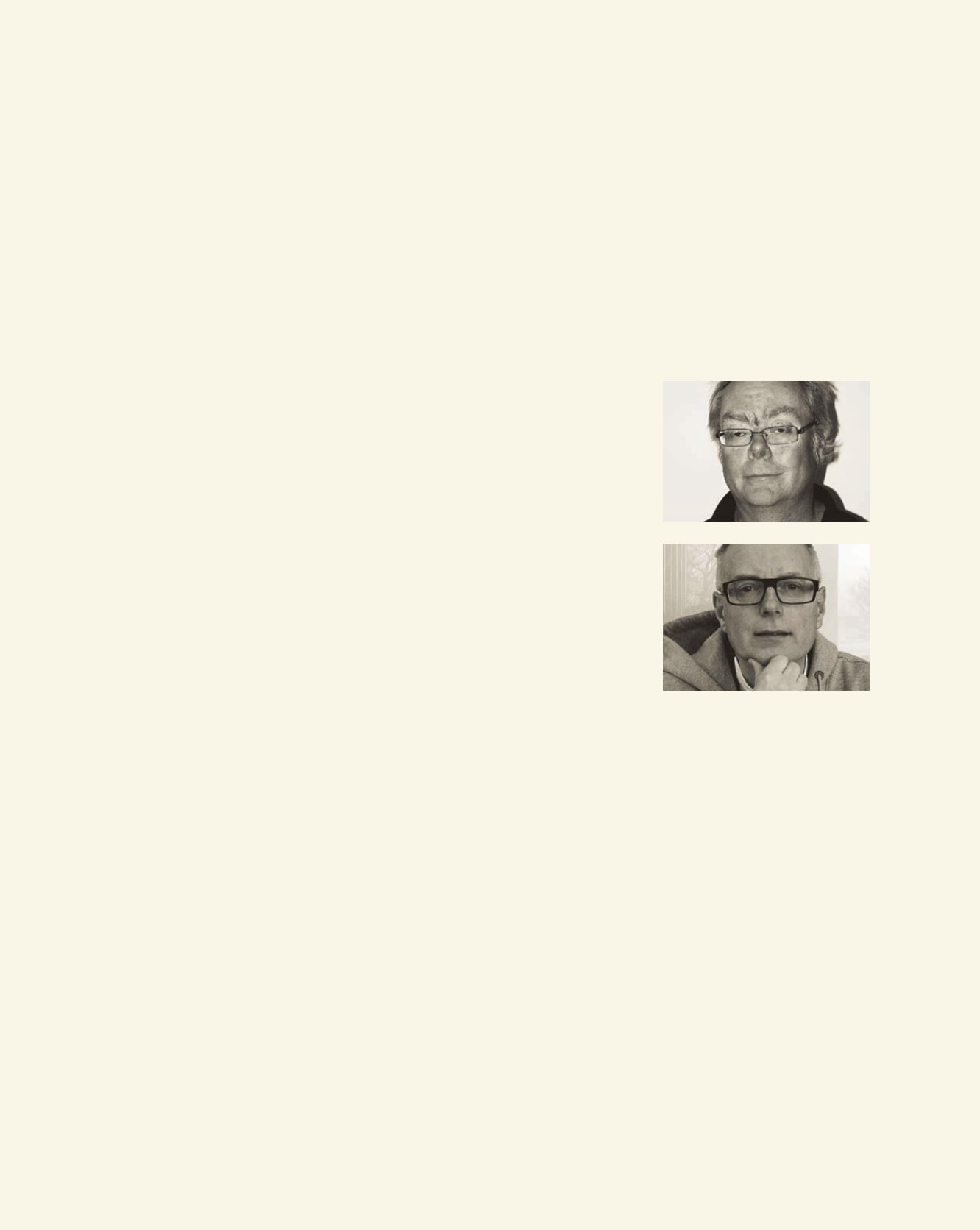
Associate Professor Steinar Killi and
Professor Simon Clatworthy
The Designer’s Century
Steinar Killi and Simon Clatworthy
In April 2013, Karl Otto Ellefsen, the Rector at AHO, asked on
his blog whether we were ‘entering the designer’s century’.
At the dawn of the Institute of Design’s 30th anniversary in
the academic year 2013-2014, this is a question that it might
ask itself as it contemplates its future. Over the past years we
have seen the Design studies programme move from being just
a traditional vocational course of study created for a steadily
shrinking manufacturing industry, to a highly ambitious pro-
gramme aimed at educating an ever expanding group of design
professionals filled with the desire to shape the future in the
broadest sense.
Consequently, AHO’s Institute of Design (abbreviated IDE)
has built a pedagogical model that fosters the drive among stu-
dents and faculty to challenge the definition of design and to
explore new directions. IDEwas one of the first to develop new
courses, research areas, and technologies for designers. What
the different pedagogical and research approaches pursued at
the institute have in common is that they all converge under
the umbrella of what we can call ‘design thinking’, a holistic
approach where the objective is not simply to solve a problem,
but to explore possibilities, and where methods and processes
are more than mere tools.
Design thinking is a misleading term because it involves as
much designing as before. However, what makes it appealing is
its combination of thinking and designing, as well as the issues
it addresses. Common to both aspects is society’s search for
innovation in all sectors, both public and private. Design at AHO
has always been perceived through the prism of innovation.
Design is about creating something new, but not simply that.
What is created must have value – value for the user, for the
company and for the wider society society. IDE has dropped the
term Industrial Design because innovation has moved in new
directions. We live in a digitalized society. Mentally, we can dis-


